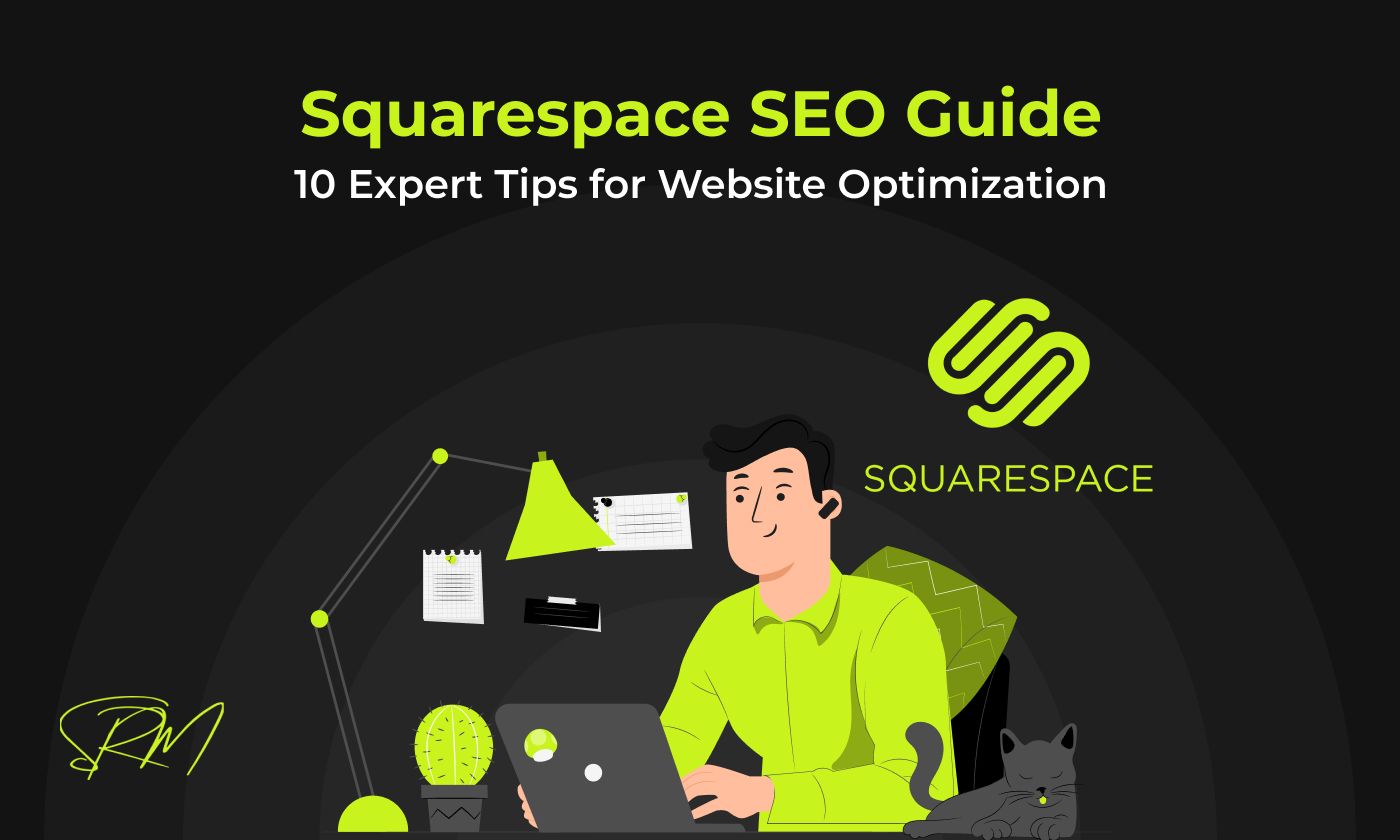
Building your website on Squarespace is a smart move. It’s easy to use, visually appealing, and offers everything you need to launch your brand online. But if your website isn’t getting traffic, impressions, or showing up on Google, it’s time to work on your Squarespace SEO (Search Engine Optimization).
Many people believe that having a beautiful website is enough, but the truth is: even the best-looking site won’t get results without proper Squarespace SEO. The good news is that improving SEO on Squarespace is not as hard as it seems. You just need to follow the right steps.
What is Squarespace SEO?
Squarespace SEO refers to the set of strategies and tools used to improve how a Squarespace website ranks on search engines like Google and Bing. While Squarespace offers built-in SEO features like clean HTML markup, mobile-friendly designs, and secure SSL certificates, getting higher rankings still requires action on your part.
Good Squarespace SEO involves:
- Adding keywords to the right places
- Creating high-quality content
- Optimizing images and page speed
- Building backlinks and maintaining a clean site structure
In short, it’s all about helping search engines understand your site and proving that your content is valuable to users.
Now, let’s dive into the top 10 expert Squarespace SEO tips from Shiwali Ratan Mishra that can help your site stand out.
1. Use Keyword-Focused Page Titles
Your page titles are one of the most important SEO elements. These titles appear on search engine results and help users understand what your page is about. A strong title tells both users and Google that your page is relevant.
For example, instead of using a title like “Home” or “Welcome,” try something more descriptive, like “Affordable Interior Design Services in Chicago.”
Example:
Instead of “Home” use “Custom Website Design Services – New York”
Instead of “About” use “About Our Digital Marketing Agency in Los Angeles
Alt tag: Use Keyword-Focused Page Titles
Do keyword research before writing titles. You can use free tools like Google Keyword Planner, Ubersuggest, or AnswerThePublic to discover what your audience is searching for.
Each page should have a unique, keyword-rich title that reflects its content. To edit your titles in Squarespace, go to Pages > Settings > SEO and enter a custom title. This helps your site appear for relevant searches and improves click-through rates.
2. Write Custom Meta Descriptions
A meta description is the short snippet of text that appears below your page title in Google search results. While it doesn’t directly affect rankings, it plays a big role in whether users decide to click on your link.
Make sure each page on your site has a custom meta description that includes your main keyword (like “Squarespace SEO”) and clearly explains what the page offers.
A good meta description should:
- Include your main keyword
- Clearly explain what the page offers
- Be around 150 to 160 characters
In Squarespace, you can add meta descriptions by going to Pages > Settings > SEO. Make sure each page has its own custom and helpful description.
3. Optimize Your Images with Descriptive File Names and Alt Text
Images can help make your content more engaging, but they also play an important role in SEO. To make them work for you, be sure to:
- Rename image files before uploading. Use names that describe the image, like “organic-soap-bar.jpg” instead of “IMG_1234.jpg”.
- Add alt text that explains the image content. This helps Google understand the image and improves accessibility for users with screen readers.
Squarespace allows you to easily add alt text when you upload or edit an image. This small step can make a big difference.
4. Create Clean, Simple URLs
Your web page addresses (URLs) should be clear, short, and keyword-friendly. Avoid long URLs with numbers, symbols, or unnecessary words.
Bad example:
yourdomain.com/page123?id=55Good example:
yourdomain.com/contact-us
https://shiwaliratanmishra.com/services/
In Squarespace, you can edit URLs by going to Pages > Settings > URL Slug. Use lowercase letters and separate words with hyphens.
5. Make Your Site Mobile-Friendly
Over 60% of users browse websites on mobile devices. If your site doesn’t load correctly or is hard to navigate on a phone, visitors will leave — and that can hurt your SEO.
The good news is that Squarespace uses mobile-responsive templates. However, it’s still important to manually check how your website looks on mobile devices.
- Text is easy to read
- Images are properly sized
- Pages load quickly
- Menus and buttons are easy to tap
A fast, mobile-friendly website improves both user experience and your search ranking.
6. Connect Your Site to Google Search Console
Google Search Console is a free tool that helps you understand how your site is performing in search results. It shows which keywords people are using to find you, how many clicks your site gets, and if there are any technical issues.
To connect your Squarespace site:
- Go to Marketing > SEO > Google Search Console in your dashboard
- Follow the instructions to verify your site
- Submit your sitemap to Google
This tool gives you valuable insights and helps improve your Squarespace SEO strategy over time.
7. Use Headings to Structure Your Content
Headings are not just for looks — they help organize your content and improve SEO. Google reads headings to understand what your page is about.
Use H1 for your main page title (just one per page), H2 for subheadings, and H3 for smaller sections. This hierarchy makes your content easier to read and scan for both visitors and search engines.
For example:
- H1: Squarespace SEO Guide
- H2: Use Keyword-Focused Page Titles
- H3: Tools for Finding Keywords
- H2: Use Keyword-Focused Page Titles
Squarespace lets you format headings easily in the text editor.
8. Start a Blog and Keep It Active
Blogging is one of the most effective ways to improve Squarespace SEO. Each blog post gives you a chance to rank for a new keyword, share helpful information, and build authority in your niche.
Think about what your audience is searching for and create content that answers those questions. Here are a few examples:
- “Top 10 Tips for Organizing Your Home Office”
- “How to Choose the Right Skincare Products for Oily Skin”
- “Beginner’s Guide to Vegan Cooking”
Post regularly, and try to keep your blogs over 500 words for better visibility in search results.
9. Build Internal Links Between Pages
Internal linking means connecting one page of your site to another. This helps visitors find related content and keeps them on your site longer. It also helps search engines crawl and index your pages.
For example, in a blog post about skincare, you might link to your product page or a guide on skin types.
Use natural anchor text, like “view our skincare collection” instead of just “click here.”
Squarespace makes it easy to add links while editing any page or post.
10. Keep Your Website Updated and Error-Free
Google prefers fresh and reliable websites. If your site has broken links, outdated content, or missing pages, it can hurt your rankings.
Here’s what you should do regularly:
- Check for broken links
- Update blog posts and product pages
- Fix any spelling or formatting errors
- Make sure your contact details are current
Use free tools like Broken Link Checker or check your Google Search Console for issues that need attention.
Monitor Performance and Keep Improving
SEO is not a one-time task. It’s an ongoing process. After implementing the tips above, keep an eye on your traffic, rankings, and performance.
Use tools like:
- Google Analytics to track visitors
- Google Search Console for keyword data
- Squarespace’s built-in analytics to see which pages perform best
Keep updating your content, writing blogs, and making improvements based on the data you collect. The more effort you put into your Squarespace SEO, the more results you’ll see.
Final Thoughts
SEO is not about tricks or shortcuts. It’s about helping people find your website by making it clear, useful, and easy to access. If you follow these ten expert tips, your Squarespace site will become more visible on search engines and bring in more organic traffic over time.
Be patient and consistent. Squarespace SEO results don’t happen overnight, but with the right approach, your hard work will start to pay off.
If you’re serious about growing your online presence, take action today and optimize your Squarespace site using these proven tips.Need help with SEO for your Squarespace website? Get in touch with SEO Specialist Shiwali Ratan Mishra, and let’s make your website work for you.



